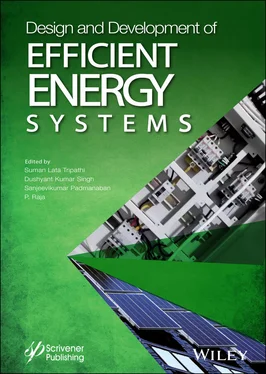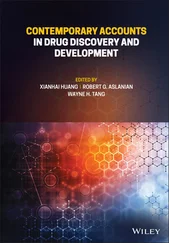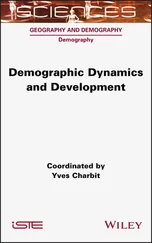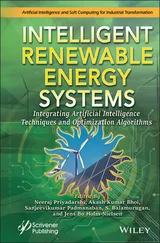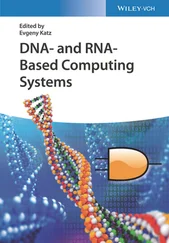1 Department of Computer Science and Engineering, Tamil Nadu, India
2 College of Engineering, Tiruchendur, Tamil Nadu, India
Abstract
IoT devices have gained global interest over the last decade and are advancing in many industries in today’s digital world. In the healthcare sector, a real-time remote health monitoring system has been developed with wearable IoT devices and machine learning to provide early intimation of risk and preventive measures during a time of emergency. The main problem is that if the data are stored in cloud and processed, huge network latency is required. Thus edge-cloud computing is used to reduce the network latency and the complex computations at the user end is processed by the machine learning techniques to obtain better performance. Usage of the edge computing also gives a better response in real-time computing, minimized bandwidth cost and efficient power consumption. In this chapter, smart healthcare energy-efficient systems with a machine learning framework is proposed. The healthcare system makes use of IoT devices for data acquisition and relevant information is extracted from the huge set of collected data. Front-end machine learning is used to make decisions intelligently based on the extracted information within the sensor framework. In back end, the machine learning automatically learns from the training data set samples and guidelines, which are already fed into the system, for intelligent decision-making capabilities. Thus a smart healthcare system is developed with machine learning, which is energy efficient, with reduced network latency and minimized bandwidth.
Keywords: Smart healthcare, internet of things, machine learning, energy-efficient system, edge computing
4.1 Introduction
4.1.1 IoT in the Digital Age
The Internet of Things (IoT) is basically the collection of sensors, actuators, wearables and similar things which have connectivity to the internet [29, 35]. These things are connected with each other to form a network and can communicate with each other. IoT devices have the capability to sense the surrounding environment and collect the data which can be processed by small computations within the IoT framework, which can lead to the development of real-time solutions. The real-time entities have their corresponding virtual entities. There also exists a communication between the virtual objects which is used to inform the real-life entities of the thing’s state. This control mechanism is also present within the IoT framework.
4.1.2 Using IoT to Enhance Healthcare Services
The IoT sensors and wearables are used vastly in the world today for various healthcare applications and services. IoT devices minimize the overall cost and save the lives of patients. IoT devices can be used to monitor real-time healthcare of patients, track patient activities, and collect patients’ data to provide an effective and mature solution [2]. The communication and interaction between patient and the healthcare provider becomes easier. In real-time monitoring of a patient, the wearable and sensor acquire data and sends it to the healthcare providers or doctors for monitoring health, which leads to the improvement of the treatment process [33]. IoT devices are connected with smart-phones for self-monitoring of health, and also support chronic diseases management, track patient, staff and equipment, and can be used to monitor aged patients [25]. Some of the challenges in IoT devices are, IoT devices are used in telehealth and telemedicine services. For example, the wireless glucometer, which is an IoT device, collects data from the patient and monitors the level of glucose on a real time-basis and sends notification to the patient’s mobile when there is a fall in the glucose level, indicating the need to take insulin. The advantages of IoT devices are monitoring remote patients, preventing unwanted hospitalization, minimizing cost, faster response time during an emergency, and effective treatment.
Edge computing [26] brings data storage and computation closer; that is, these tasks are done within the IoT framework in the location that is nearer for the user end. It is a distributed computing, mainly designed to minimize the response time and to eliminate network latency, saving bandwidth. As the storage and computation is done in the edge nodes, data can be protected efficiently. When edge computing is coupled with machine learning technology, real-time solutions with high efficiency can be developed easily [4, 15, 39].
Machine learning is basically the study of statistical models and algorithms with which the computer can automatically perform the specific tasks without any explicitly given human instruction. The computer relays on inference and patterns to perform the task. The training data is used to make the system learn to make decisions or predictions, thus eliminating the instructions that are programmed for performing tasks. Machine learning is currently used in a variety of industries to automate the process of decision making. For example, in the healthcare industry, machine learning is used in chronic disease management. It can, for example, predict seizures from electroencephalography data and notify the patient and healthcare provider before anything wrong occurs or it can perform a decision-making operation when an emergency situation arises [28, 38, 42].
4.1.5 Application in Healthcare
As population growth increases rapidly, the challenges to maintain patient health records and to analyze a huge amount of patient information also increase. Thus IoT and machine learning is used to automatically collect and process the huge set of data and thereby make healthcare systems more robust and dynamic. There are various applications of machine learning in the field of healthcare. These include identifying the diseases and diagnosing, smart health record systems, drug discovering and manufacturing, developing personalized medicines, emergency care, medical image diagnosis, clinical research and trails, disease outbreak prediction, etc. [16]. Some of the real-time applications are:
Determine sudden fluctuations in blood pressure. The observed fluctuations are analyzed and checked to see if they are normal or not and the emergency alert service is activated accordingly. Real-time monitoring is necessary to find such critical data and act accordingly. The data patterns of the patients are studied with the machine learning technique.
Closest healthcare center can be located and an ambulance can be guided there. The body sensors collect patient data which can be used to check up on the patient’s health.
Patient’s body posture and movement can be deducted and used to check if a patient is in need of help. Solutions on assisted living can be developed based on these types of services.
In 2014, Sourav, et al. [8] proposed a healthcare monitoring system that can be used to monitor all the sensors that could function together; the interference within the sensors are removed. Each sensor’s delay in monitoring equipment and sample rate maintenance are mandatory for monitoring the healthcare system. As there are only limited resources, this system provides maintenance of best possible sampling rate and better healthcare quality. A variety of sensors are maintained simultaneously and with better quality of the data transfer, network bandwidth is used effectively.
In 2016, Vippalapalli, et al. [43] proposed an IoT-based smart healthcare system that collects data through wearable sensors. It is a low-cost system; the sensors are used to collect a patient’s real-time healthcare data, and that data is shared among themselves, analyzed and stored. It eliminates all the inefficiencies in the manual process. The data acquisition process is carried out by a wearable device based on Audrino with Body Sensor Network. This framework is integrated to Labview for providing remote monitoring of patients. In 2016, Dinesh, et al. [9] proposed a hadoop framework for monitoring the healthcare of the patient based on IoT, in which big data is used for analyzing the healthcare data and generating an emergency alert when necessary. Body Sensor network (BSN) is used for extracting the critical information. A summary of the observed critical data is sent to the healthcare provider on a real-time basis, thus improving the standards of the healthcare.
Читать дальше
